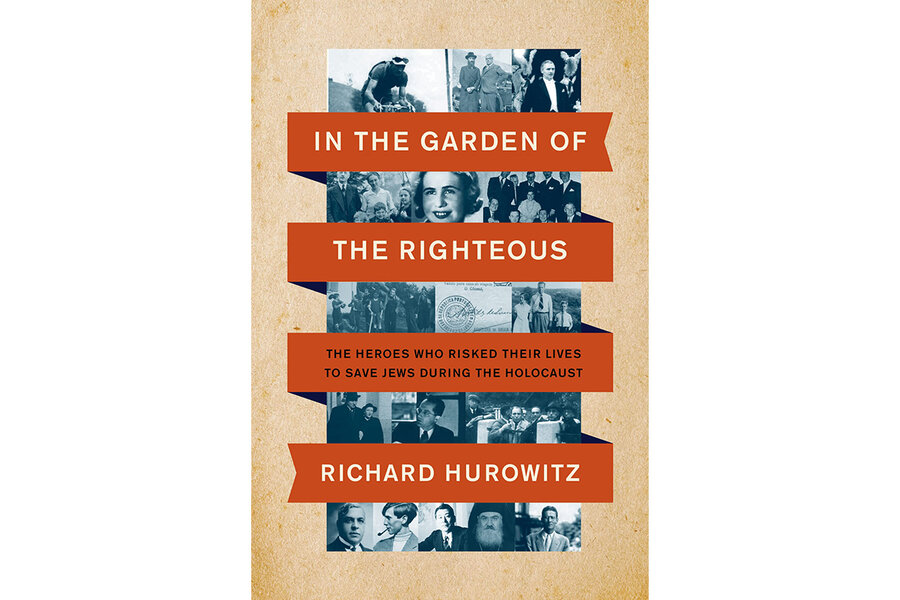‘I cannot allow these people to die’: Saving Jews in World War II
Loading...
The title of Richard Hurowitz’s tremendously moving new book “In the Garden of the Righteous: The Heroes Who Risked Their Lives to Save Jews During the Holocaust” refers to a real place. It’s located on the Avenue of the Righteous at Yad Vashem, the Holocaust memorial, in Jerusalem. The garden, first planted in 1962, honors with a tree each person who worked to save Jewish lives during World War II – and as Hurowitz writes, “the garden is verdant with foliage as hundreds more trees have been planted.” “In the Garden of the Righteous” tells the story of some of the people whose names are honored there.
In this case, a quiet and lovely garden is a far more fitting monument than a gallery of heroic statues would be. Hurowitz, a writer whose work has appeared in The Wall Street Journal and The New York Times, assembles the stories of people who made the lonely, terrifying decision to stand against the armored fist of the Nazi state. Drawing on interviews and archives, Hurowitz presents the details of a handful of these stories, and each one reads like a sharply etched, miniature version of Steven Spielberg’s 1993 movie “Schindler’s List” (or its literary source, Thomas Keneally’s 1982 novel “Schindler’s Ark”).
Hurowitz’s cast of characters is as varied as the ways in which human beings can respond to the worst of crises. The most dramatic member of that cast is Princess Alice, the great-granddaughter of Queen Victoria who married Prince Andrew of Greece and came into conflict with the encroaching Nazi forces that invaded Athens in the spring of 1941. As Hurowitz points out, her royal status was no guarantee of safety. “The danger was constant, despite the princess’s stature,” he writes. “An Italian princess had been sent to a concentration camp for harboring Jews.” In addition to sheltering Jews, Princess Alice funded soup kitchens and orphanages, and for a while, she was accorded respectful treatment from the Nazis, who assumed that her German heritage made her sympathetic to them. “But when a general visited her, she refused to shake his hand,” Hurowitz writes. “When he asked what he might do for her, she replied, ‘You can take your troops out of my country.’”
Some of these stories are very nearly as unexpected as that of a defiant princess. One of the most memorable of these is the tale of Japanese diplomat Chiune Sugihara, “a bon vivant who enjoyed well-tailored suits and gourmet food,” who was posted to a Lithuanian city that had never seen a Japanese person before.
The thought of being a hero had obviously never occurred to Sugihara, but when he found himself suddenly confronted with thousands of Jewish refugees and Polish soldiers desperate to flee – perhaps to one of the Dutch colonies in the Americas – he felt he had no choice but to act in his modest capacity by issuing visas to as many of those people as possible. “I cannot allow these people to die,” he recalled thinking.
Perhaps the star of Hurowitz’s book is a figure he describes as “the little-known midlevel Portuguese diplomat [who] quite possibly saved more people than any other individual during the Holocaust,” a man named Aristides de Sousa Mendes, who used his bureaucratic authority to thwart his country’s punitive “Circular 14” policy that sharply restricted the movement of certain categories of refugees, including Jewish people.
In defiance of his superiors, Sousa Mendes wrote out visas for as many desperate people as he could. “I would rather stand with God against man than with man against God,” he said, and even later, when he was stripped of his official authority, he continued writing paperwork. It's estimated that he saved an estimated 30,000 people over several weeks in the summer of 1940, Hurowitz writes. Sousa Mendes even personally led hundreds of people to safe passage out of Portugal.
The number of these heroes was never large, as Hurowitz makes unblinkingly clear at the outset. Most people, confronted with threats to their livelihood, their lives, or the lives of their families, simply looked away rather than try to interfere. But even so, according to Hurowitz, there’s hope. “The stories of the righteous allow us at least to contemplate the enormity of man’s cruelty by asking ourselves how we would hope to react when confronted with it,” he writes. “If you take your inspiration from the rescuers and bring kindness and compassion and courage with you, you will make the world a better place.”
A surprising amount of “In the Garden of the Righteous” turns on paperwork; most of its heroes use bureaucracy's own machinery against it, thwarting unjust laws and inhumane governments. But the book’s heart is that simple statement from Sugihara: “I cannot allow these people to die.”








